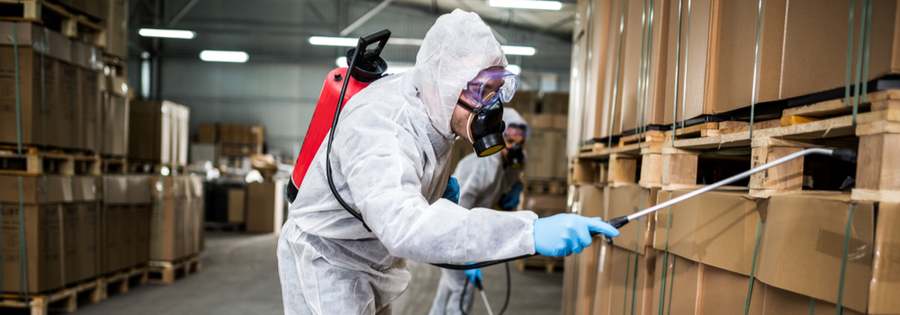Professional Exterminator Services: Bid Farewell to Vermin permanently!
Wiki Article
Specialist Bug Control Techniques for Long-Term Results
In the world of bug control, achieving continual effectiveness and long-lasting outcomes needs a meticulous strategy that transcends mere elimination. Professional parasite control strategies envelop a detailed method that starts with an extensive examination and analysis, adhered to by exact parasite identification to comprehend their habits patterns. The execution of Integrated Insect Administration (IPM) concepts, paired with eco-conscious therapies, creates the foundation of sustainable bug elimination. However, real examination lies in the continuous tracking and maintenance of the treated areas, guaranteeing a pest-free environment for the near future. By diving into the ins and outs of these methods, a much deeper understanding of specialist pest control techniques for sustaining outcomes arises.Inspection and Analysis
Upon going into a residential or commercial property for parasite control solutions, the first action is an extensive assessment and evaluation to determine the extent of the invasion and identify one of the most efficient therapy plan. Professional insect control service technicians are educated to thoroughly check out the properties, trying to find signs of bug task such as droppings, chomp marks, nests, or any kind of structural damages. They will certainly likewise assess the problems that may be bring in bugs, such as food sources, water leaks, or entry points.
Pest Identification and Behavior

Additionally, comprehending the behavior of the identified parasite is vital to applying effective control steps. Understanding where parasites nest, what they feed on, and their activity patterns can assist pest control experts design techniques to remove them successfully. Some bugs might be nocturnal, while others are more energetic throughout the day. This knowledge permits the application of treatments at ideal times for optimum performance.
Integrated Parasite Management (IPM)
Integrated Bug Management (IPM) methods incorporate multiple methods to regulate and avoid bug infestations in a sustainable and eco friendly way. exterminator. By integrating approaches such as biological control, environment manipulation, adjustment of social methods, and making use of resistant selections, IPM aims to decrease using chemical pesticidesOne of the vital principles of IPM is use this link the focus on prevention. This proactive technique includes monitoring insect populations frequently to find any prospective issues prior to they escalate. By determining insect troubles at an early stage, pest control actions can be executed promptly and successfully.
Additionally, IPM promotes making use of safe parasite control approaches whenever possible. This can consist of utilizing natural killers of the pests, presenting useful insects, or making use of pheromones to disrupt breeding patterns. By minimizing dependence on chemical pesticides, IPM not only protects the setting but additionally helps maintain a balance in the ecosystem.
Environmentally-Friendly Therapies
Implementing eco-conscious strategies in pest control treatments can effectively deal with invasions while focusing on environmental sustainability. Environmentally-friendly therapies concentrate on minimizing the impact of insect control techniques on ecosystems, non-target organisms, and human health. These approaches often involve the usage of natural nearby pest control predators, such as ladybugs or nematodes, to control pest populaces, minimizing the need for chemical interventions. In addition, strategies like environment adjustment, such as adjusting dampness degrees or removing food resources, can aid prevent pests without making use of hazardous substances.An additional key facet of environmentally-friendly treatments is using organic and naturally degradable products that damage down quickly without leaving damaging deposits in the setting. Herb pesticides stemmed from plants like chrysanthemums or neem provide reliable pest control while presenting marginal risk to non-target species. Utilizing techniques like warmth therapies or pheromone traps can target certain bugs with precision, decreasing the total ecological impact of insect control methods.
Recurring Monitoring and Maintenance
Continual monitoring and upkeep are vital components of effective insect control administration. Recurring surveillance plays a critical role in guaranteeing that bug invasions are found early and handled without delay. Regular assessments by trained specialists are needed to recognize any type of indications of bug activity, examine the effectiveness of previous therapies, and make adjustments to the bug control plan as required. By keeping track of pest populaces with time, bug control experts can track trends, prepare for potential problems, and execute safety nets to reduce the danger of future infestations.
In addition to tracking, maintenance practices are crucial for lasting bug control success. This consists of executing proper hygiene actions to eliminate potential food and water resources for insects, securing off entrance indicate protect against insects from getting in the facilities, and addressing any kind of architectural yard pest control concerns that might facilitate parasite infestations (bed bug treatment). By integrating ongoing surveillance and upkeep into an integrated insect management approach, services can make certain a pest-free atmosphere and secure their residential property versus expensive damage and health threats
Verdict
In final thought, using professional pest control strategies such as thorough examination and analysis, exact bug identification and understanding of their behavior, incorporated bug administration techniques, environmentally-friendly treatments, and ongoing monitoring and upkeep are crucial for attaining lasting lead to insect control. By implementing these approaches, people can properly handle bug infestations and keep a pest-free setting in a sustainable fashion.Report this wiki page